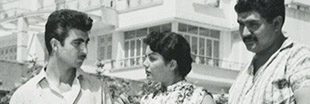The Herculean Task of Transporting Materials
Even the modest Tehran–Rey line involved a monumental logistical effort. All equipment, rails, machinery, and supplies had to be transported across vast distances with no existing rail infrastructure in Iran. The process unfolded in several stages:
-
From Antwerp in Belgium, the materials were shipped to Batumi, a port on the Black Sea.
-
From Batumi, they traveled via the Transcaucasian Railway to Baku.
-
The shipment was then loaded onto ships crossing the Caspian Sea to Bandar Anzali.
-
From Anzali to Tehran, heavy machinery was transported on the backs of pack animals through the mountainous route via Qazvin.
To reduce costs, the Belgian company set up a packing plant in Baku and purchased large numbers of draft animals in Tbilisi. They also purchased rails from Russia instead of Western Europe, a decision that cut costs but added to the complexity of the project.
The transportation and construction difficulties significantly inflated expenses and delayed the project, yet the main line was successfully completed and inaugurated in 1888.
Length and Structure of the Railway
The railway consisted of:
-
A main line approximately 8.85 km (5.5 miles) long, running from Tehran to Rey.
-
Two branch lines, each about 4.02 km (2.5 miles), linking the main line to iron ore mines southeast of Tehran.
The branch lines were completed in 1893 and played an important role in transporting ore and goods, though the railway remained primarily a passenger line.

